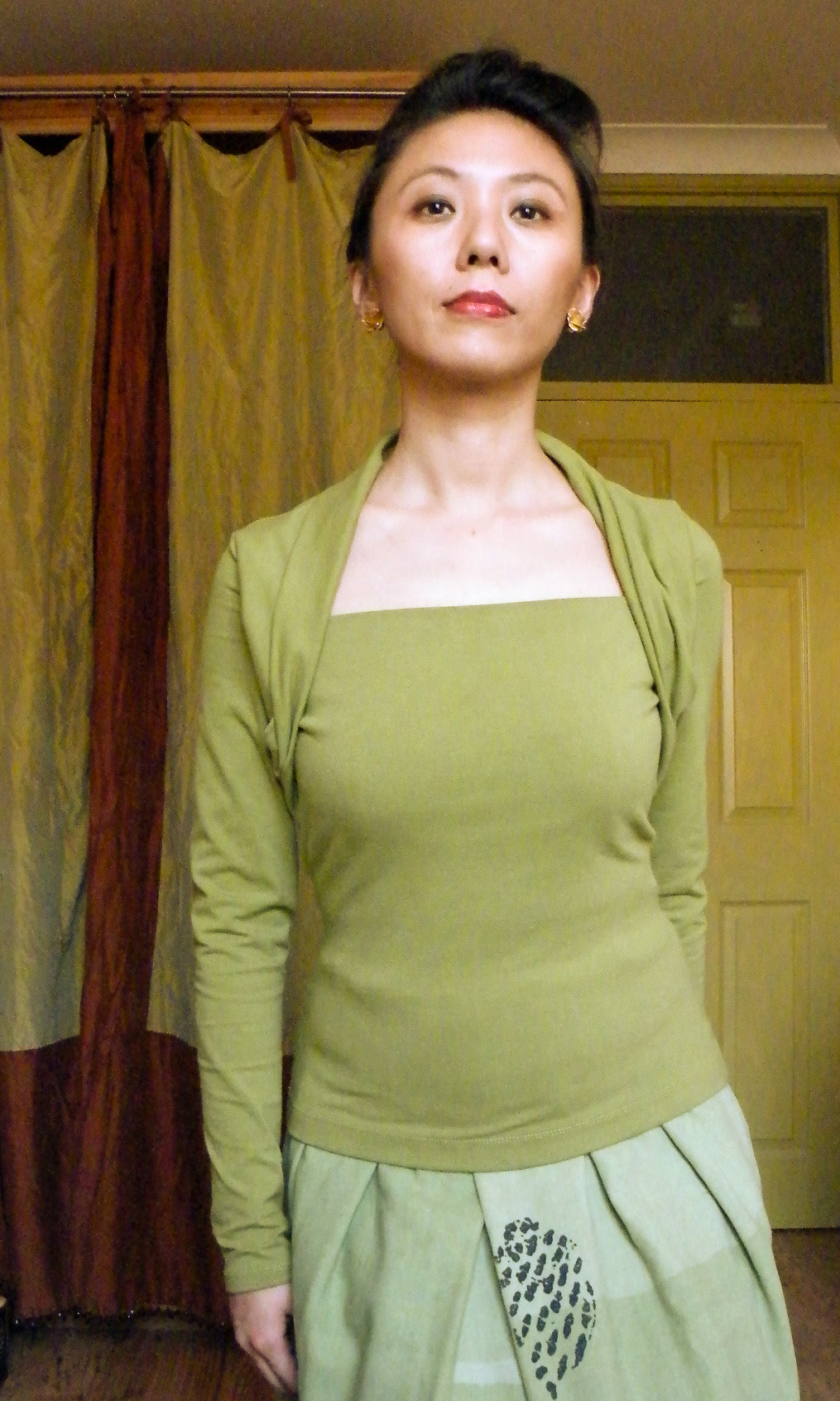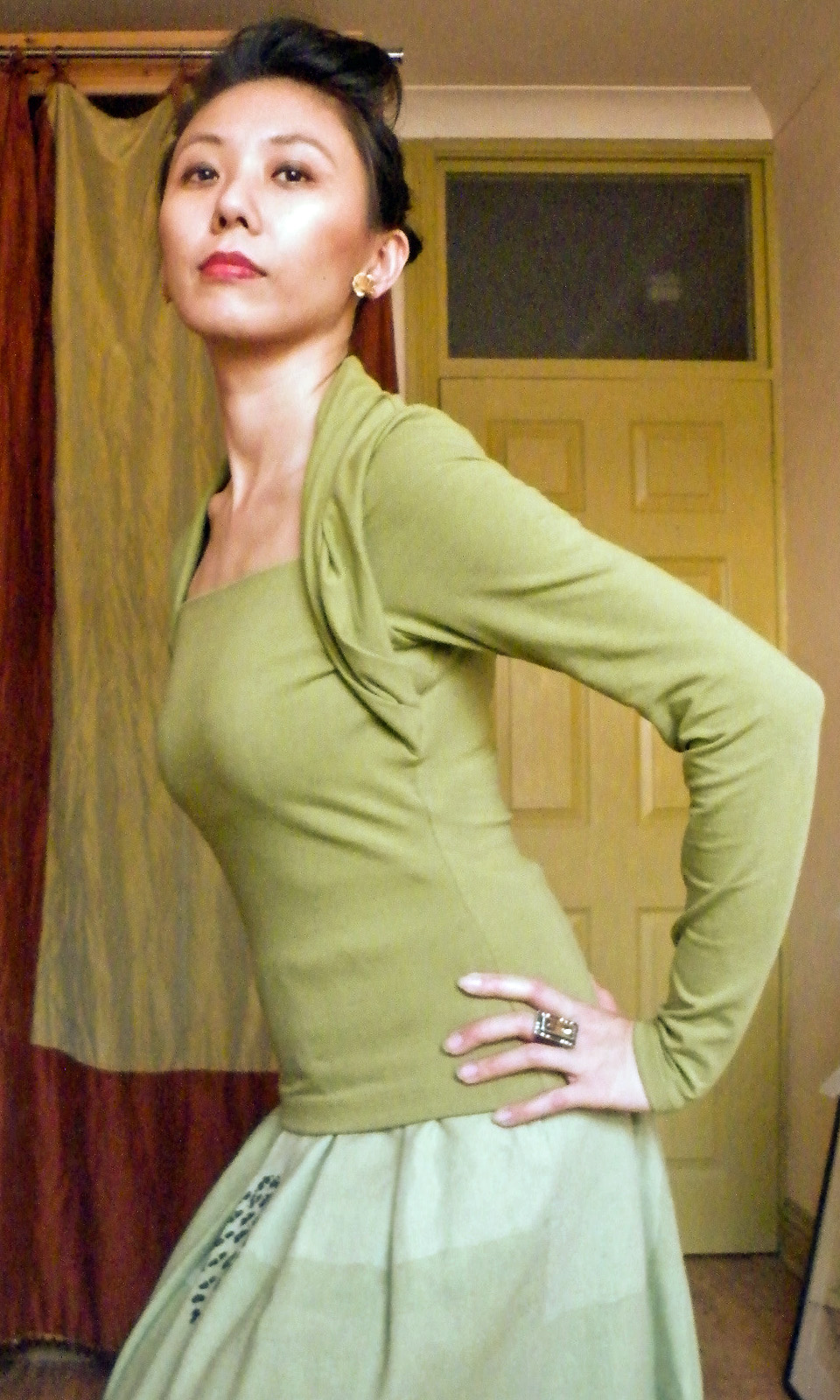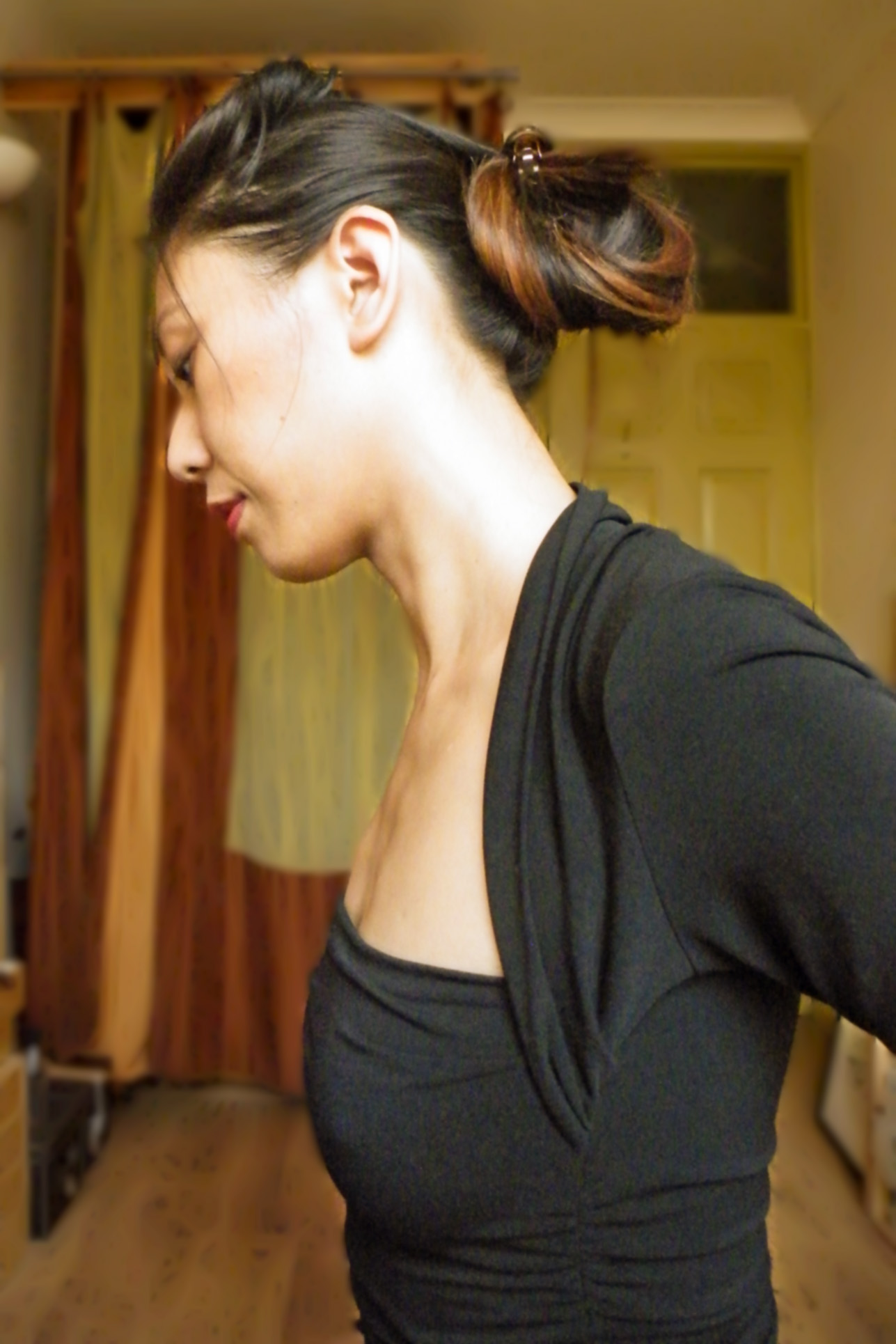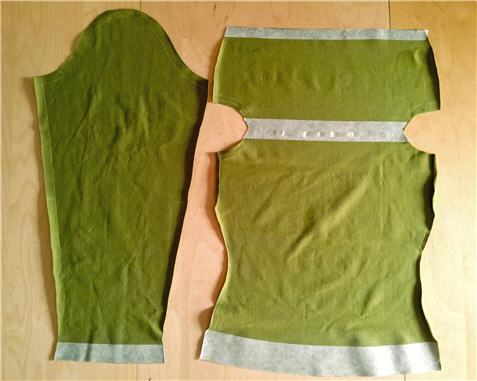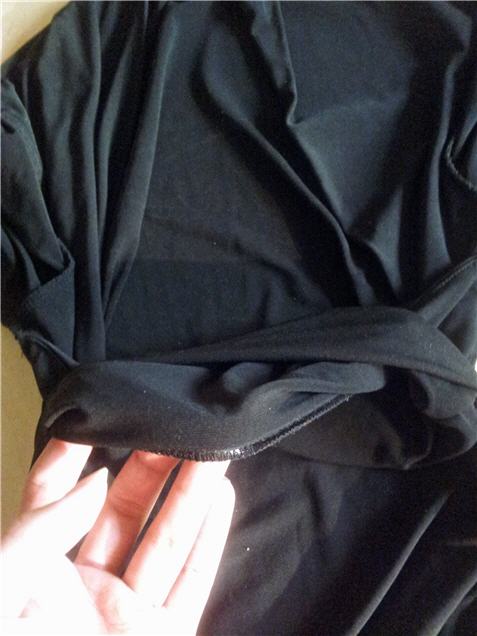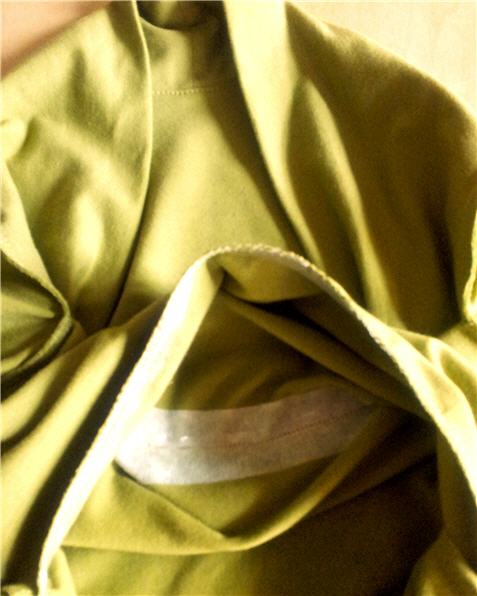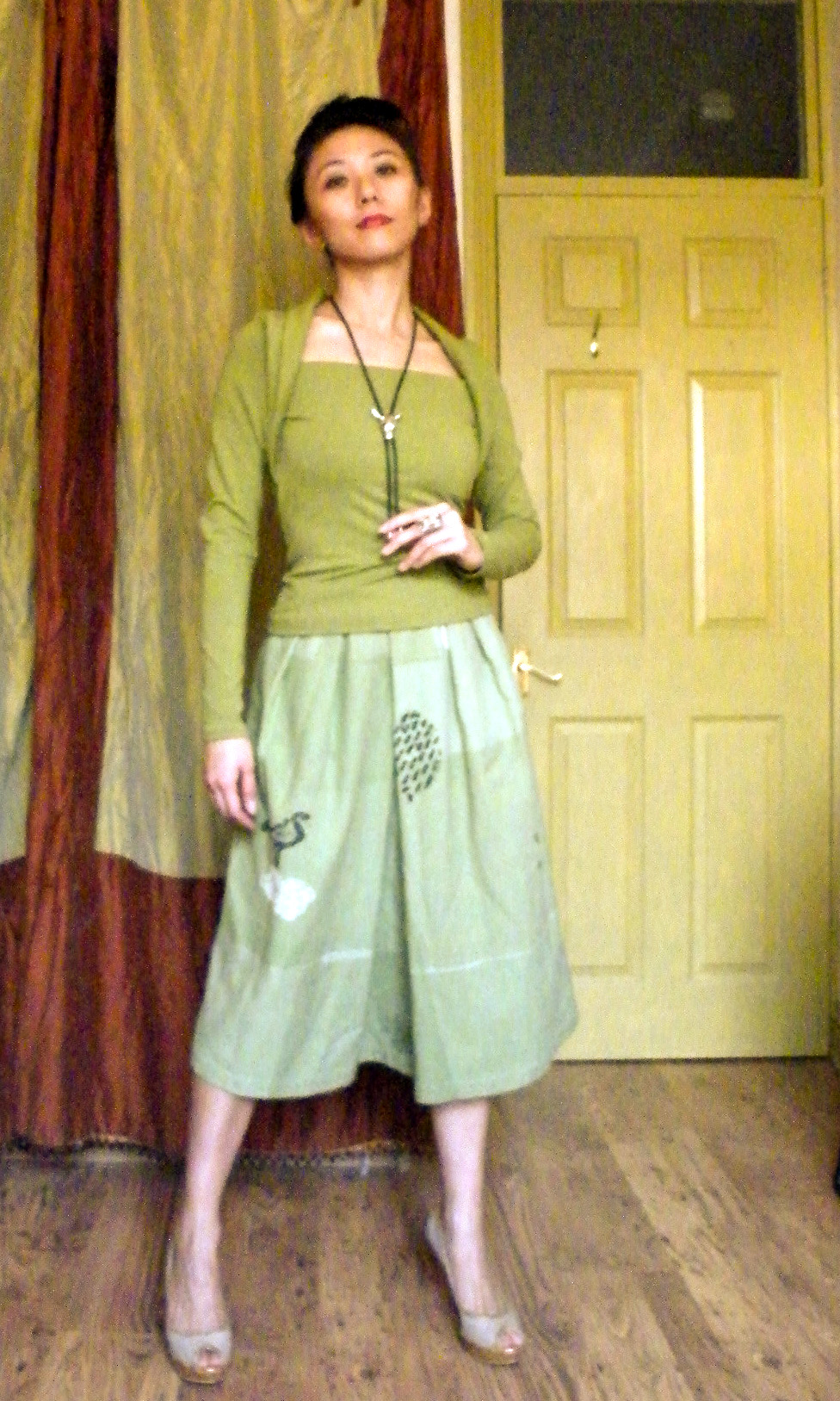Well hello there. Sorry about the lack of progress report. I haven’t been entirely idle. In fact I’ve taken the bodice tissue fitting as far as I can me thinks.
But I can’t seem to get a single decent photo to illustrate my findings. And I really wanted to have pictures of thousands words. I find it useful to see other people’s photos illustrating fitting issues.
That’s one reason why I really liked Fit For Real People – the abundance of photos and guinea pigs of all shapes and sizes. I have another fitting book and half that I use as reference – Fitting & Pattern Alteration, both editions of it. While it seems more comprehensive at a glance, I find the use of drawings instead of photos and the isolation of individual fitting problem actually harder to know which fitting problems are relevant.
I might bite the bullet and write up my findings anyway. But not today. Today I want to talk about how much is “much” and when do you stop being “standard”.
So following FFRP’s instruction I got my other half to help me create this Body Graph.
Now FFRP have some guidance on what deviation is considered sloping or square shoulder, low- or high-waisted, long- or short-legged, and where some of the other body parts fall in a standard 8-head-tall figure. But I need more.
Like does my big headedness skew all the length evaluations? Is my underarm lower than expected or is that just my big head throwing everything off? How long is a standard neck? How long the standard arm joint? My Big Bertha have arm hole shapes that seem shorter and wider and tilted the other way than what I’ve seen on standard dress forms. So I’m assuming I’m non-standard in that department too.
 And how much narrower should the waist be to be hour-glass shape rather than rectangular? I use to think I’m an inverted triangle as that seems like the widest part compared to the bust, waist, and hip. Also because my hip measurement is always smaller than the pattern size I use for the bodice. But judging by the Body Graph, I’m most likely a boring rectangle – like almost half of American population surveyed according to this “Shape of Things to Wear” article that Tanit-Isis found via another blogger. My waist width is at best 1.5″ narrower than my hip and 1.75″ narrower than my shoulders on either sides. Is that enough indentation to qualify me for hourglass? I fear not.
And how much narrower should the waist be to be hour-glass shape rather than rectangular? I use to think I’m an inverted triangle as that seems like the widest part compared to the bust, waist, and hip. Also because my hip measurement is always smaller than the pattern size I use for the bodice. But judging by the Body Graph, I’m most likely a boring rectangle – like almost half of American population surveyed according to this “Shape of Things to Wear” article that Tanit-Isis found via another blogger. My waist width is at best 1.5″ narrower than my hip and 1.75″ narrower than my shoulders on either sides. Is that enough indentation to qualify me for hourglass? I fear not.
Do you get equally confused when following these fitting and figure-evaluation instructions? Or is it just me? I’m blaming my fuzzy Neptune straying too close to my Sun for this hair-splitting tendency. What’s your excuse?
How many angels can you fit on the tip of a pin? What if it’s a super-fine bridal pin?



 I’ve attempted many time before. They all seem to fizzle out somehow, leaving a trail of useless fitting muslins behind. You can then understand my reluctance to make a toile for every singe new pattern.
I’ve attempted many time before. They all seem to fizzle out somehow, leaving a trail of useless fitting muslins behind. You can then understand my reluctance to make a toile for every singe new pattern.
